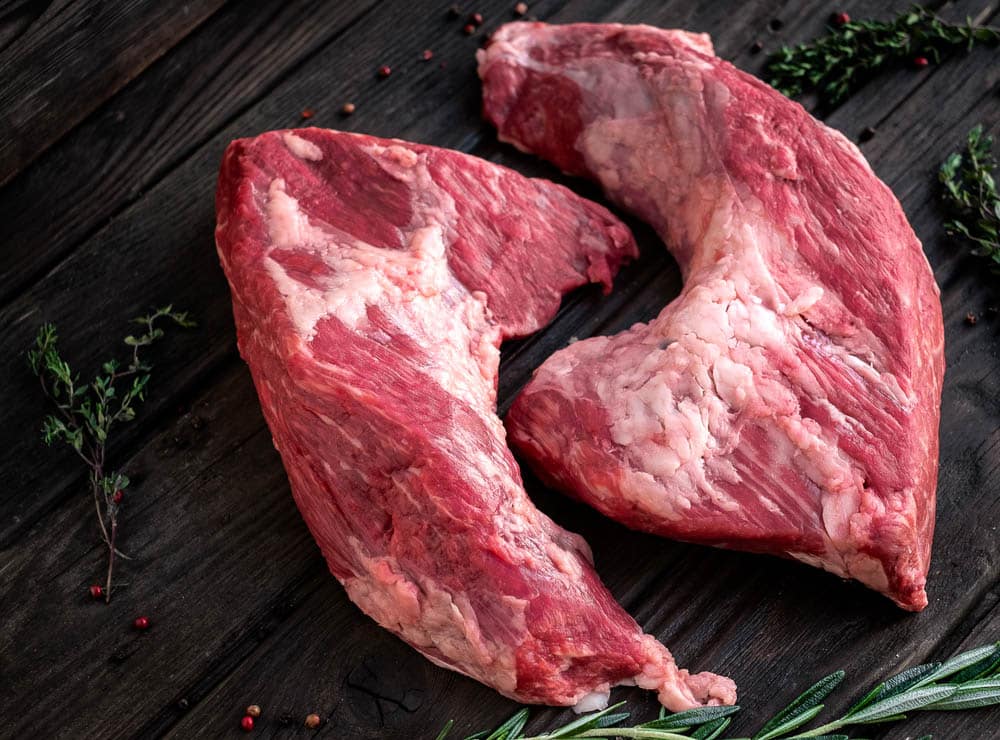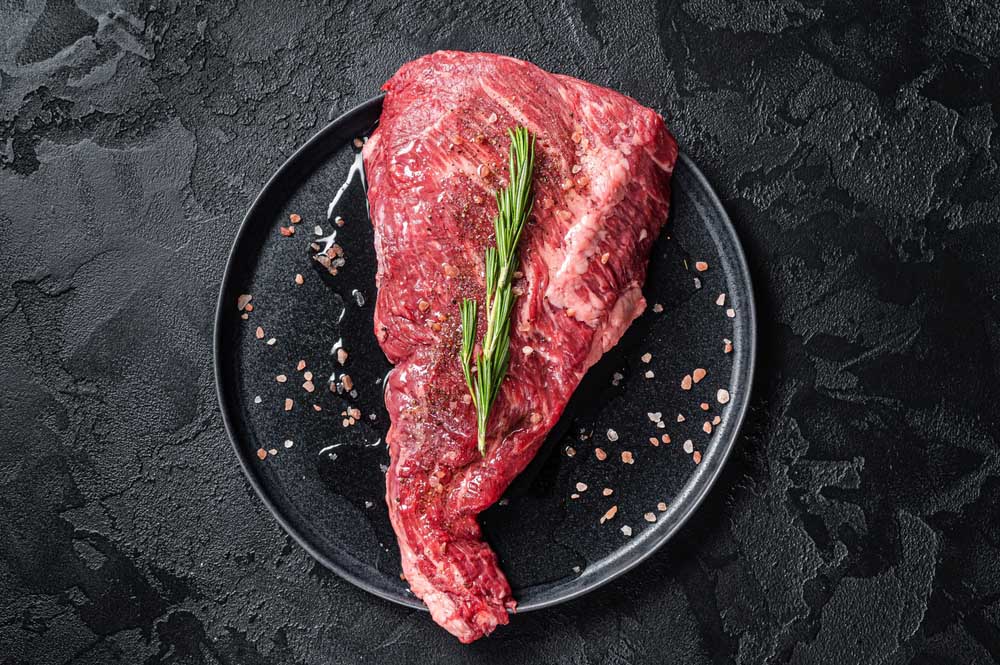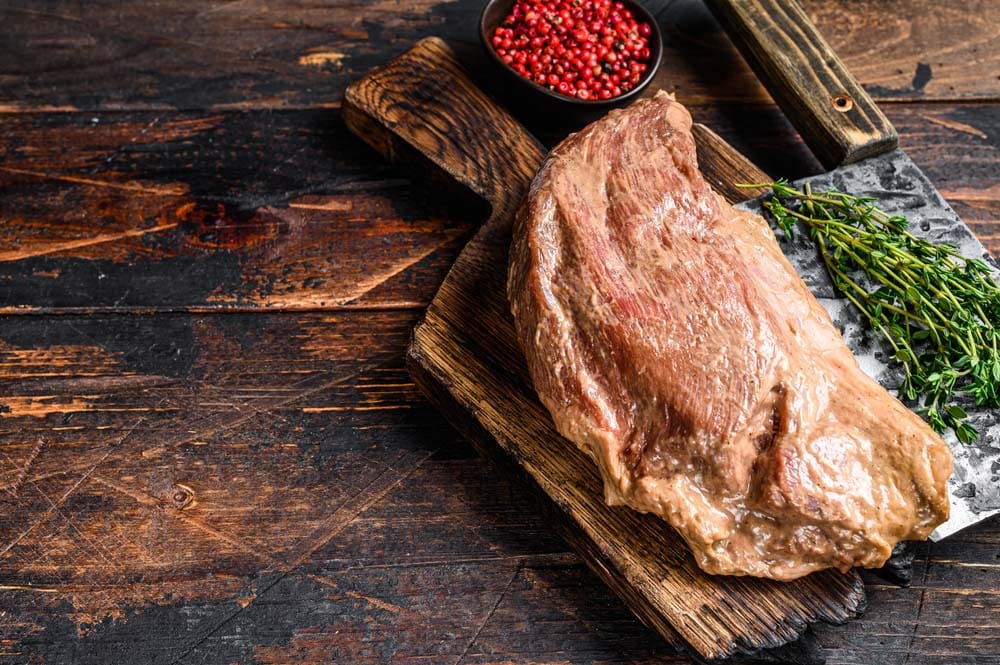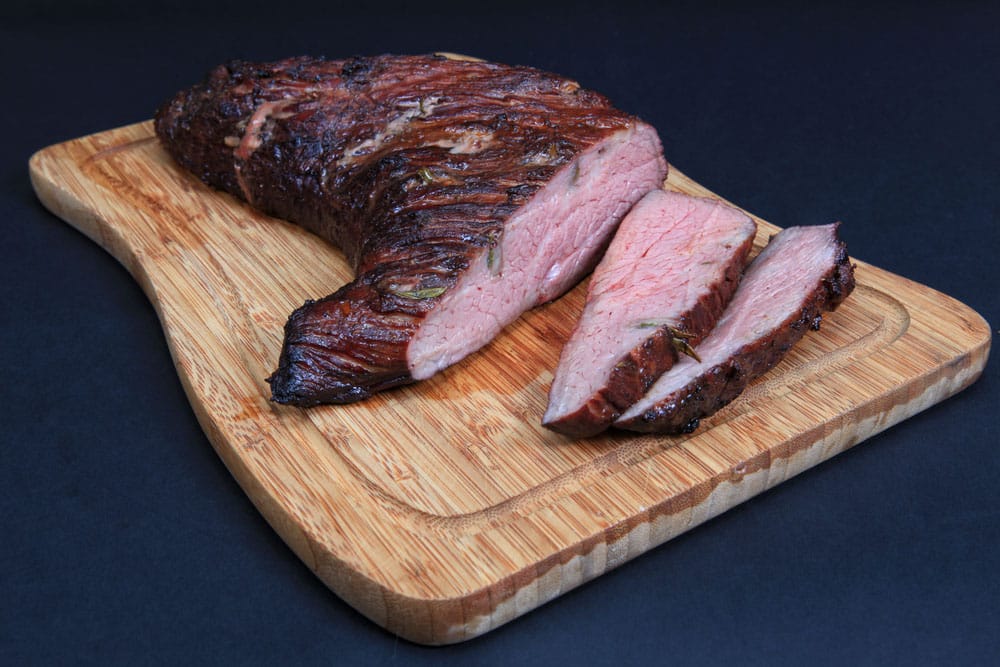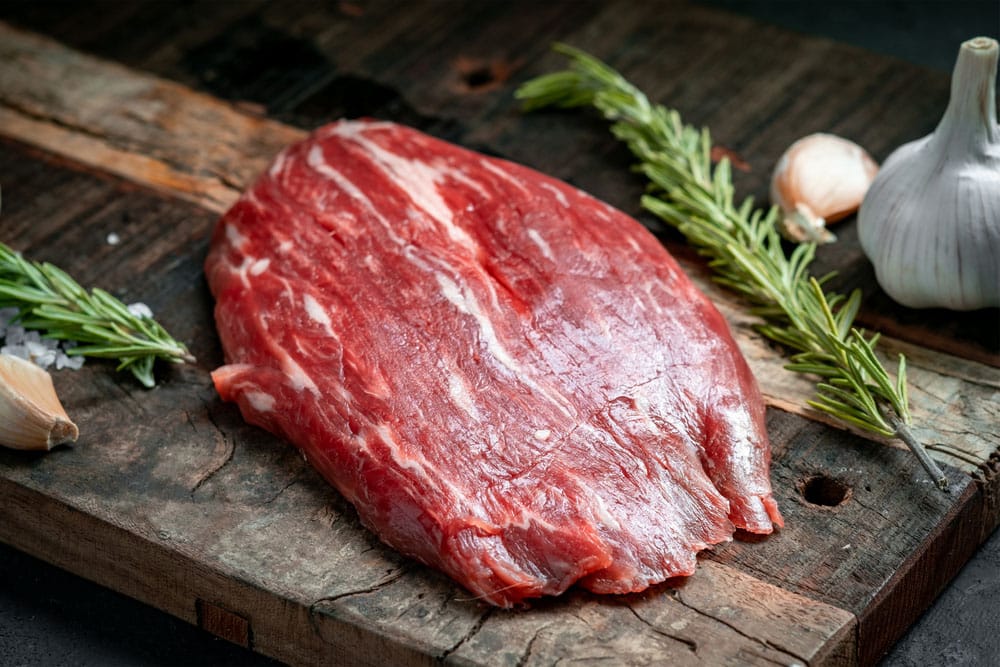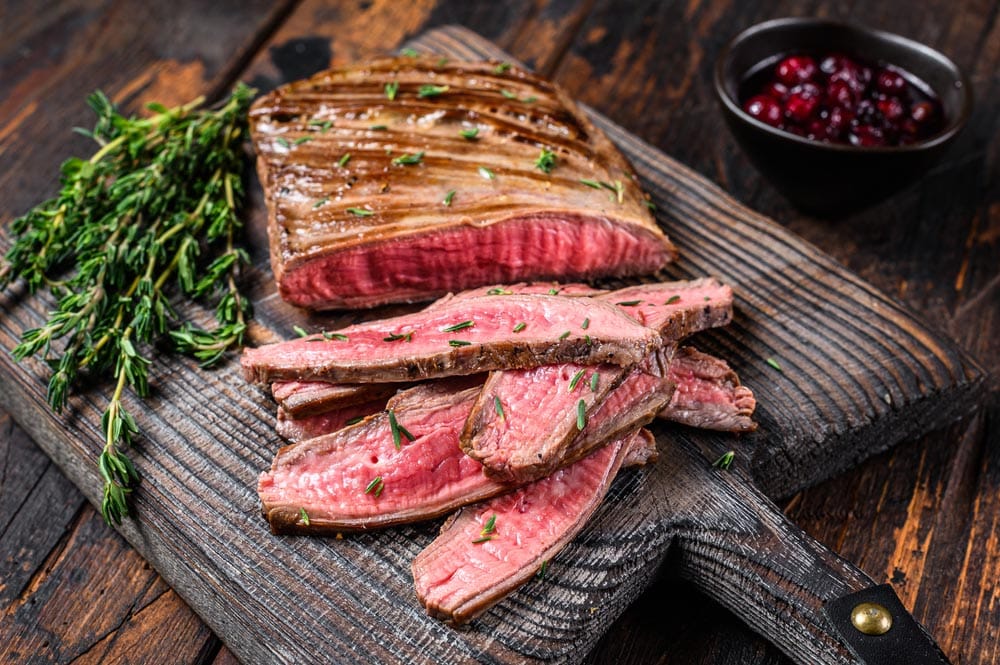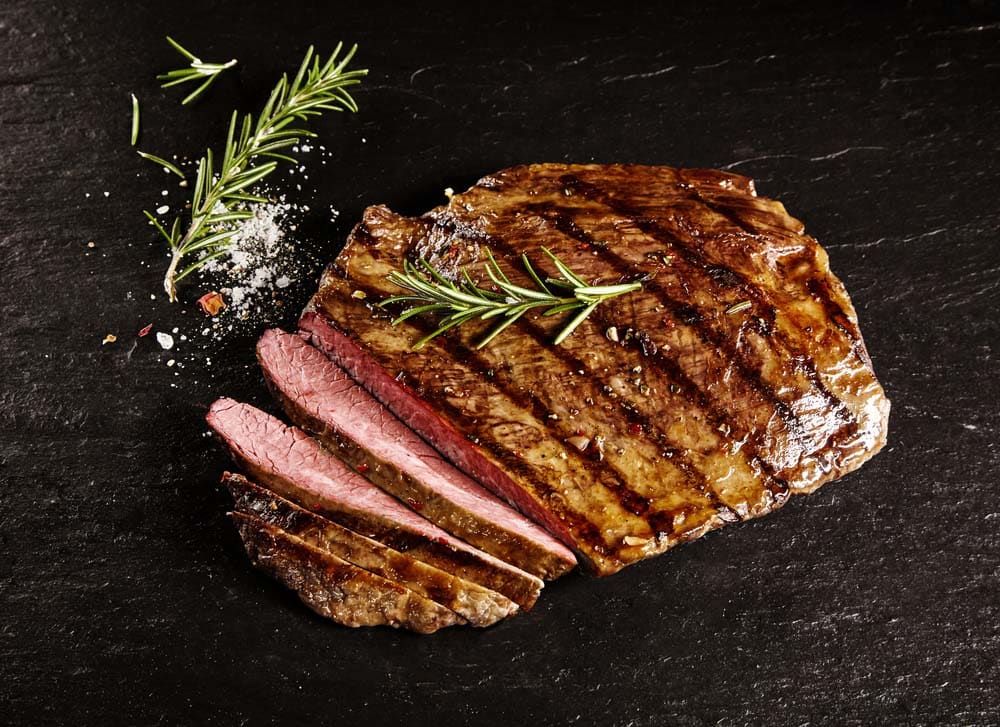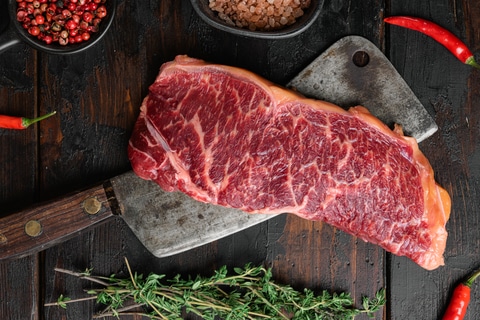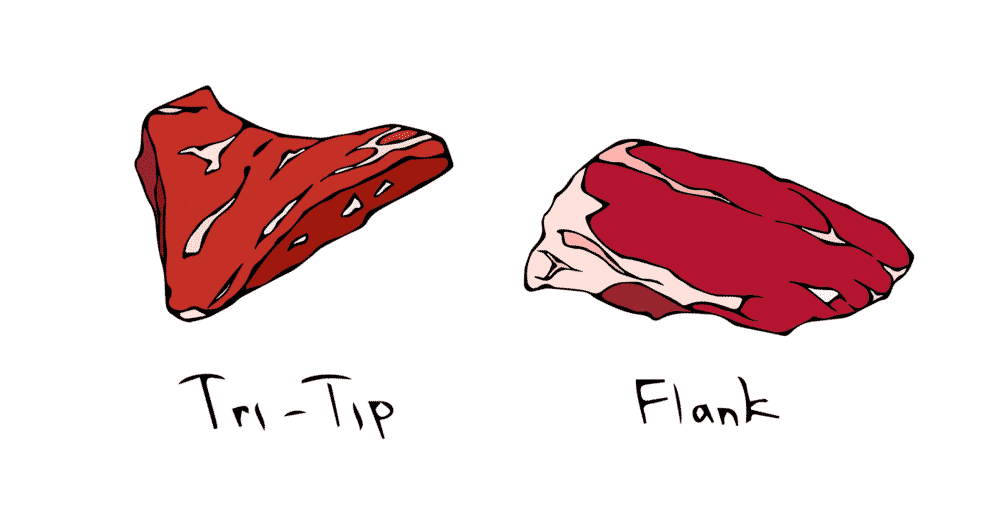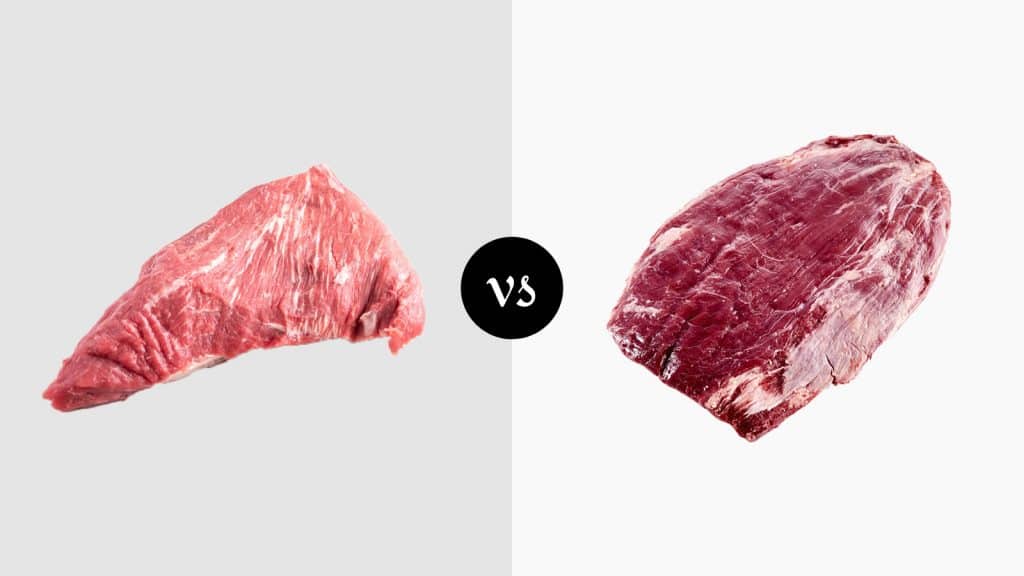
Cooking the perfect steak is less about the recipe and more about the technique and kind of meat you’re using. Tri tap and flank are both used for making steaks and roasting whole. However, there’s a noticeable difference in the taste and texture.
A good steak and roast call for the right call when it comes to what cut to use, and we’ve got everything that you need to know about tri-tip and flank steak coming up.
Tri Tip Vs. Flank Steak Comparison
| Tri-Tip | Flank Steak | |
|---|---|---|
| Names | Triangle Tip, Triangle Steak, Newport Steak, Santa Maria Steak, Triangle Loin Butt Steak, Aiguillette Baronne | Flank Steak, London Broil, Skirt Steak (Incorrect Term Of Reference But Commonly Used) |
| Cut | Cut From Bottom Sirloin Subprimal - Extracted From Triangular Shaped Loin Butt Thigh Muscle Location | Cut Of Meat Extracted From Abdominal Muscles, Not True Steak |
| Toughness-Tenderness | Tougher Than Rump, More Tender Than Flank | Tougher Than Most Other Steaks Due To Extreme Leanness |
| Composition | Rump And Round With Generous Marbling | Fibrous Tissue With Very Little Fat |
| Flavor | Bold Beef Flavor With Buttery Richness And Slight Chewiness And Lingering Sweetness With Iron/Mineral-Like Savory Notes | Bold Beefy Flavor With More Overall Meaty Taste Than Most Steaks |
| Texture | Long Muscle Fibers, Tender Meat, Dense Marbling, Firm But Succulent | Firm Solid Fibrous Texture |
| Size | 5 Pounds Before Trimming | 1.75 Pounds |
| Serving Suggestion | Left Whole And Roasted After Overnight Marinating | Rubbed, Seasoned And Roasted After High-Heat Sear | Stir-Fry Meat, Quick Frying, Mariting, Medium-Rare Steaks |
| Affordability | $10-$15 Per Pound | $10-$12 Per Pound |
| Considerations | Can Be Difficult Cut To Find | Extremely Tough If Cooked As A Steak To Anything More Than Medium |
| Substitutes | Fatty Sirloin, Top Sirloin Roast | Skirt Steak, Top Round, Hanger Steak, Tri-Tip, Flat Iron Steak, Top Sirloin |
Tri-Tip Vs. Flank Steak
Both varieties of beef fall in the same price range, but each offers distinctly different benefits. From texture to taste, price to the names to look for in-store here is a complete breakdown of tri-tip and flank steak compared.
Tri-Tip
A tri-tip is a fatty piece of meat with just the right degree of marbling for a perfect balance of flavor and tenderness that is named after its signature triangular shape.
There is perhaps no other cut that offers the amazing midway point of quality between extreme affordability and delectable flavor. Let’s take a closer look at the defining characteristics of tri-tip.
What Is Tri-Tip Called In-Store?
You’ll find tri-tip marked as triangle tip, triangle steak, Newport steak, Santa Maria steak, triangle loin butt steak, and Aiguillette Baronne in France when sold whole instead of sliced.
What Cut Of Meat Is Tri-Tip?
The tri-tip is a cut that’s taken from the bottom sirloin subprimal of a cow and is extracted from the thigh muscle. The precise location is the triangle-shaped section of the loin butt.
This tensor fasciae latae muscle assists in balancing the pelvis and extending the hip, which therefore puts it in constant, albeit lightweight to moderate intensity, use. This makes it rich in connective tissue and thus rich in flavor.
Is Tri-Tip Tender Or Tough?
As a cut extracted from a muscle in constant but light to moderate use, expect the meat to be more fibrous with more connective tissue than is “twin sister cut” the rump steak. This means that careful cooking and expertise are generally needed to cook a tip-tip to perfectly tender.
Marinading, smoking, broiling, and other extended cooking processes are the best way to cook tri-tip so that it comes out melt-in-your-mouth soft and juicy.
Composition
Due to the position, it is extracted from, the tri-tip, when left whole, is made up of both the rump and the round and exhibits a good degree of marbling.
Flavor
This cut from the bottom round is packed with flavor thanks to being a hard-working muscle that’s virtually in constant use. Expect a healthy degree of fattiness, bold beef flavor with buttery richness, and slight chewiness that leaves a sweet, lingering, mineresque meaty taste.
Texture
Trip-tip flesh has long muscle fibers resulting in tender meat and delicate but dense marbling and a firm, tender piece of meat with a noticeably but negligible degree of chewiness when well prepared.
Size
Most tri-tip roasts weigh in the region of 5 pounds before being trimmed of fat.
Serving Suggestion
Tri-tip can be cut into smaller pieces or steaks, but it is best-left whole. If the tri-tip isn’t trimmed, cut away the silvery membrane that’s attached to the meat and the excess fat.
Either marinade the tri-tip overnight and then oven roast at 10 to 15 minutes per pound or rub it down with your favorite choice of seasoning and grill for 10 minutes per pound after searing for 6 minutes a side until done.
You can tell that the roast is ready when a thermometer reads 130°F when measuring the thickest part of the tri-tip roast. The fat on the beef should be downward to ensure even cooking.
Pan grilling is possible, but extreme care must be taken to avoid drying out the meat by cooking it for too long.
Affordability
Due to being more sinuous and filled with more fat and connective tissue than its uppermost counterpart cut, tri-tip is extremely affordable. Expect to pay in the region of $10 to $15 per pound.
Considerations
Tri-tip can be difficult to find despite being one of the lowest costing best-tasting cuts of meat for roasting around.
What Beef Is Similar To Tri-Tip?
A thick, fatty sirloin steak is the best substitute for a tri-tip roast. Top sirloin roast with a lot of marbling should be your first choice. It’ll be a little less flavorful but far more tender.
Flank Steak
Many cooks love flank steak as the ideal cut of choice for extended marinating. Not only does this soften up the meat, but it changes the fibrous texture, which soaks up the marinade immensely, turning it into a melt-in-your-mouth beefy flavor.
There are tons of uses for flank steak. Let’s take a closer look at this affordable, low-end piece of beef.
What Is Flank Steak Called In-Store?
Flank steak is almost always packaged as flank steak. However, you’ll also find it commonly marked as London Broil or incorrectly marked as skirt steak, which is actually a different cut.
What Cut Of Meat Is Flank Steak?
While most of us call it flank steak, the truth is, it’s not a steak at all. Flank steak is a cut from the abdominal muscles of a cow, extracted from the frontal area of the rear quarter of a cow just above the belly area but behind the plate just below the ribs.
Is Flank Steak Tender Or Tough?
Flank steaks are lean and tough, with a degree of toughness that’s far greater than tri-tip or most other steaks. As mentioned, it is not a true steak and therefore doesn’t have the same tender texture that most steaks offer.
This being said, when flank steak is properly prepared and carefully cooked, it does come out without any significant degree of chewiness and delivers surprising softness as compared to improper cooking and/or preparation.
Composition
The distinctive taste and texture of Flank meat come from its location, granting an unmistakable fibrous texture. The abdominal part of animals is right behind the chest and holds greatly exercised muscles.
These muscles are richly supplied with blood granting them a wonderful taste and succulence but very little fat per se. It is safe to say that the flank steak is the juiciest of all steak pieces.
Flavor
Coarse fibers from the abdominal muscles and rich blood flow grant flank steak a bold, beefy flavor that lacks the slight sweetness from the marbling of other steaks. The beefiness is thus more prominent due to the leanness.
Texture
Flank steak is firm with a solid fibrous texture. When serving flank meat, make sure to cut the meat against the grain. You’ll ruin the steak’s texture if you cut in the direction of the grain.
Size
Most flank steaks measure roughly 1 foot in length and are about 5 inches wide with 1-inch thickness. The average weight of a flank steak is 1.75 pounds.
Serving Suggestion
Flank meat is not used for cooking steaks. This piece of soft meat is ideal for steak fajitas and can be stir-fried for Chinese recipes. Flank meat tends to stay tender even after cooking it for prolonged periods. Multiple techniques and recipes can help you cook the ideal steak.
But the easy hack to a great flank steak is good marination. Make sure you marinate the flank overnight. Using salt and vinegar with the remaining spices helps tenderize the might. Once the raw meat has absorbed the necessary marination, it tastes wonderful when cooked.
It is recommended to cook flank meat on slow heat to achieve the perfect taste. The recommended temperature is around 125-130 degrees when you take the flank steak off the stove. However, you can take the temperature up to 135 degrees or more if you like your steak medium-rare.
Affordability
Expect to pay in the region of $10 to $12 per pound for flank steak. It is even more affordable than tri-tip.
Considerations
As one of the leanest cuts with the least calories, flank steak is packed with flavor but comes out terribly tough if cooked as a steak for anything more than medium. You’ll find that flank steak needs marinating if you’re planning to cook it well-done.
What Beef Is Similar To Flank Steak?
There are several great substitutes for flank steak. Skirt steak, top round, hanger steak, tri-tip, flat iron steak, and top sirloin are all excellent alternatives.
The best substitute for roasting is tri-tip, whereas other varieties are best suited to steak strips or cubed steak as is used in stir-fries, fajitas, wraps, and stews.
What Is The Difference Between Tri-Tip And Flank Steak?
The main difference between tri-tip and flank steak is that tri-tip is an actual steak extracted from the region directly opposite the rump, whereas flank steak isn’t a true steak but rather a cut of meat taken from the abdominal section of a cow, which makes it tough with a coarse, fibrous grain as compared the juicy, marbled meat of tri-tip.
Which Is Best Between Tri-Tip Vs. Flank Steak?
Tri-tip is largely considered to be the better quality cut of meat between tri-tip and flank steak. It offers similar affordability as flank steak with the potential for better flavor and a softer texture without extensive marinading or tenderizing being necessary.
Yet, both tri-tip and flank meat are ideal for steaks. Flank steak is the least expensive and comes out great when prepared right. Tri-tip has more fat and thus more flavor, but it’s harder to cook.
